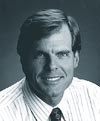|


|

|

Ed-Mail
Steve Werner, Publisher/Editorial Director
 The more things change, the more they remain the same.
The more things change, the more they remain the same.
This is never more true than in photography, which, despite the advances in electro-technology, still remains a craft or talent—the lack of which can't be replaced by circuits and software. When Minolta took autofocus mainstream in 1985 with its Maxxum, I can recall a sports photographer who feared that his long-learned skills could be duplicated by anyone with one of the new cameras. Obviously, there's more to great photography than the ability to follow-focus. And, even today, AF technology isn't foolproof.
Likewise, with the involvement of computers, scanners and digital cameras, some basic rudiments of photography—like being in the right place at the right time or crafting a sharp photo—were thought to be necessities destined for extinction. Everything could be created or corrected with software. In this issue, we concentrate
on the topic of sharpness as the case in point. No, the "sharpen" tool can't make an un-sharp photo sharp, but there are some things you can do to make your best effort when taking the shot and when enhancing it in the computer. If you've wondered how much sharpness can be artificially manufactured in the computer, when is too much sharpening too much, and how does the unsharp mask make an image sharp, this is your issue. If you're new to photography or newly inspired by digital photography, our sharp tips for the taking will be a worthwhile refresher to ensure that your big image starts with the best fundamentals.
Some of the most exciting photo subjects are still the handi-
work of the natural world. The photographer's task is to faithfully or creatively render this detail. Harold Feinstein is a
digital photographer embracing the new technologies, yet he's hardly one of the "gens" (X, Y, Next or D, for digital). As a young street photographer, he was included in the famous Family of Man exhibit at the New York Museum of Modern Art in the early '50s. He has had a major career in New York advertising photography and, now, with his more recent flower project, he has continued to expand his photographic horizons. All of the photos for his major book on flowers, One Hundred Flowers, were done with a digital camera, though not the off-the-shelf type most of us are using. His are large, studio view cameras with digital backs, using the computer as a viewfinder. This sort of "extreme digital" shows how the medium has truly come of age. And, in a practical sense, the computer showed him a "Polaroid," which faithfully previewed the final product. What you see is what you get.
However, while Feinstein has brought maximum technology to bear on these delicate blooms, it's easy to say that his eye for the subject and artful compositions is something that can only be accomplished by the experienced human computer. We follow up the Feinstein coverage with some down-to-earth instruction on how you can achieve beautiful, studio-like effects with flowers (or any similar subject) using basic gear on casual weekend outings.
|

|

Home
| Articles & Reviews
| Current Issue
| Past Issues
Staff & Contributors
| Photo Books
| HelpLine
| Glossary
Advertiser Info
| Links
| Shopper
| Subscriptions
| Back Issues
Account Inquiry
| Submissions
| Contact Us
| About Us
| Privacy Statement
PCPHOTO Magazine is a publication of the Werner Publishing Corporation
12121 Wilshire Boulevard, 12th Floor, Los Angeles, CA 90025
Copyright© 2025 Werner Publishing Corp.

|
|










































|